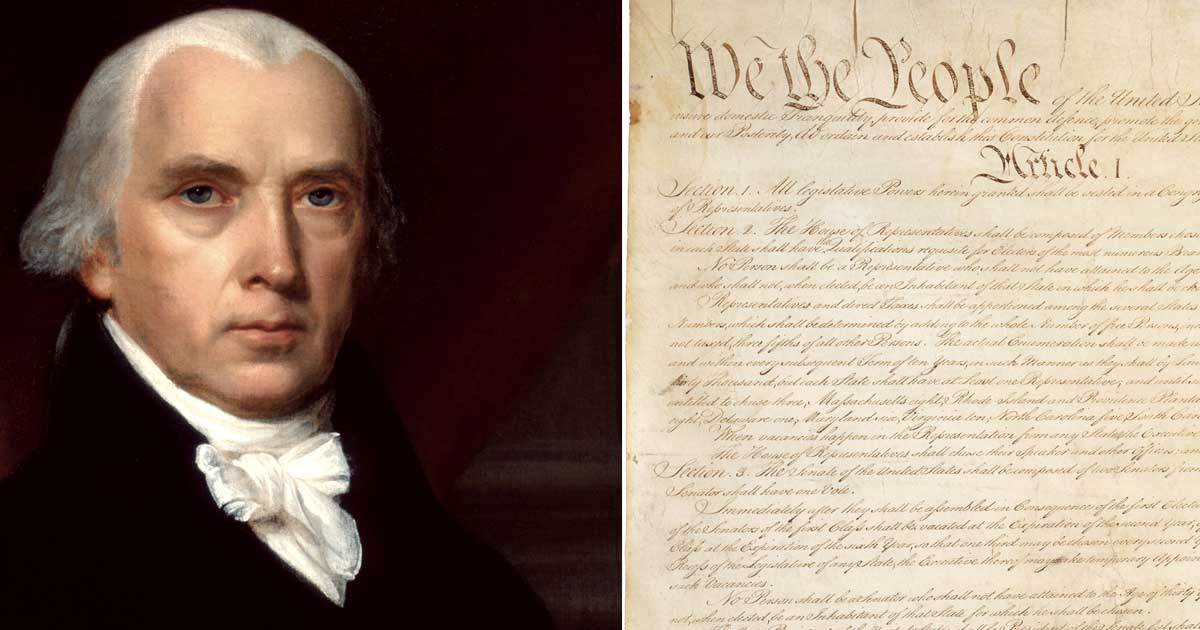
James Madison was one of our elite Founding Fathers. He composed the first drafts of the Constitution and the amendments that would follow. He advocated for a strong federal government. Under the Articles of Confederation, our Nation’s first Constitution, he felt the states had too much power and the federal had too little.
Madison not only drafted the Constitution, but also was one of the main promoters along with Alexander Hamilton and John Jay. The three would write 85 essays that would be published in newspapers around the country. Madison very effectively wrote 29 of them.
He was raised on the 1723 family plantation in Montpelier, Virginia. During his ownership, they held an estimated 100 slaves. It’s understood that Madison’s plantation carried significant debt and he never freed his slaves. The state of Virginia had tough pro-slavery laws that date back as far as 1691, long before Madison’s birth. The state implemented significant economic hardships for slave owners to overcome before they could consider emancipating their slaves. That hardship, combined with his debt, would have made this a challenge.
However, where there’s a will, there’s a way.
While Madison was serving in the Virginia Legislature, he became lifelong friends with Thomas Jefferson, the author of the Declaration of Independence. In 1792, Madison and Jefferson joined forces and created the Democratic – Republican Party. When Jefferson became the third President, he recruited Madison to serve as his Secretary of State. Madison oversaw the Louisiana Purchase from the French in 1803. He was criticized for getting the nation into the War of 1812 and mishandling it.
Constitution and Bill of Rights
Madison believed that the nation needed a strong federal government to assist in regulating the states with a system of checks and balances. He wanted to prevent one branch having greater power over the other. At the 1787 Constitutional Convention in Philadelphia, Madison presented his ideas for a federal government with three branches including: legislative, executive and judicial. This would form the basis for the new Constitution.
To pass it would require 9 of the 13 states to ratify it. The document was ratified by the states in 1788. The newly established government would begin in 1789 with George Washington becoming the first president of the United States. Madison would then start work on the 10 amendments to the Constitution with details pertaining to the fundamental rights of the citizens. They were all ratified in 1791 with freedom of speech and religious freedom being the first.
Madison held religious beliefs. He often fought for religious freedom, believing that it was an individual’s right from birth. Biographer Ralph Ketcham wrote, “There is no principal in all of Madison’s wide range of private opinions and long public career to which he held with greater vigor and tenacity than one of religious liberty.”
Once the Constitution was adopted on June 21, 1788, Madison acknowledged the hand of Providence in the achievement, saying, “It is impossible for the man of pious reflection not to perceive in it, a finger of that Almighty Hand with so frequently and signally extended to our relief in the critical stages of the revolution.”
Madison was also aware of the need for salvation and a future life in the hereafter. In a letter written to a friend, Madison wrote, “A watchful eye must be kept on ourselves lest while we are building ideal monuments of Renown and Bliss, here we neglect to have our names enrolled in the Annals of Heaven.”
Thanks largely to James Madison’s Constitution, we have enjoyed the benefits of living in a nation with protected freedoms and liberties for all. Although they are currently under assault, keep in mind that Madison was 5 foot 4 inches tall, weighing 100 pounds and spoke with a high-pitched voice.
If he could get it done, so can we.